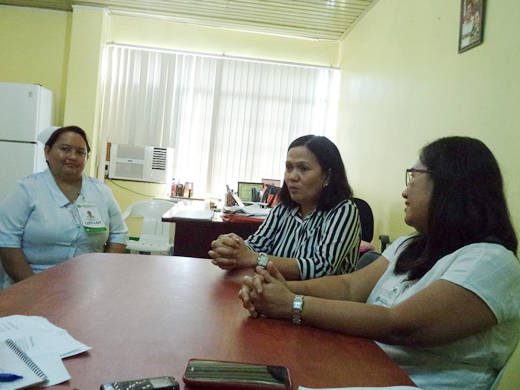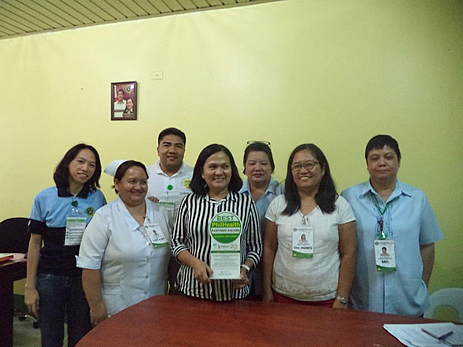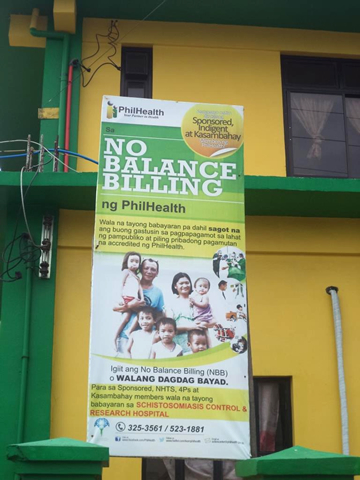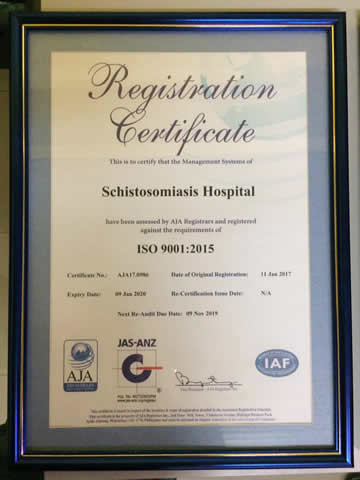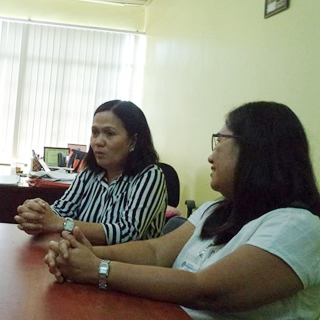PhilHealth
home | contact us | sitemap | disclaimer
News
Schistosomiasis Hospital and Research Center:
A beacon of hope in Leyte
May 22, 2017
“Service with a heart.”
This is the message of Dr. Amelita Avenido, Hospital Chief of the Schistosomiasis Hospital and Research Center (SHRC) in Palo, Leyte as they follow the call of President Rodrigo Duterte, through Health Secretary Paulyn Ubial, to take care of the poor. “Mostly poor and the poorest ang client namin dito; ang kailangan talaga ay totoong pagsisilbi. Sabi nga ni Ms. Universe Pia Wurtzbach, with a heart,” she added.
The SHRC is a 25-bed capacity hospital retained by the Department of Health (DoH). With only about 140 personnel on board, it caters to patients coming from Palo, consisting of 33 barangays and the nearby towns of Tanauan, Tolosa, Mayorga, Jaro and Sta. Fe, Samar and as far as Surigao.
It was founded in 1975 through Presidential Decree (PD) 1062 as the research arm of the Schistosomiasis Control and Research Service to provide clinical service to patients with schistosomiasis nationwide. According to World Health Organization, schistosomiasis is an acute and chronic parasitic disease caused by blood flukes (trematode worms) where people become infected when the larval forms of the parasite released by freshwater snails penetrate the skin during contact with infested water.
The SHRC has already expanded its medical and ancillary services and attended to patients with various illnesses and diseases. Dr. Avenido mentioned that “Pneumonia ang number one cause of confinement dito sa area, sumunod ang acute gastroenteritis at pangatlo na lang ang kaso ng schistosomiasis. Pero mataas din ang acute crisis psychiatric symptoms.” Attending to pregnant women and to those who will give birth are also on top of their list.
Typhoon Yolanda
The hospital was severely devastated when Typhoon Yolanda, which was considered as the most powerful storm that made landfall in recorded history, hit Eastern Visayas in November 2013.
“Nasira ang ospital. Ang 2nd floor ng main building, from the ceiling to the windows wala iyon lahat. Basag lahat ng bintana sa first floor. Lahat ng equipments basa lahat,” recalled Dr. Agnes Aliposa, Medical Division Chief of SHRC who was called to respond right after the landfall of the typhoon.
They managed to transfer their 41 patients safely to the first floor. “Ang naabutan ko sa emergency room ay mga pasyenteng mostly injured dahil sa yero, broken glasses,” she mentioned.
After the turmoil that Typhoon Yolanda brought, the hospital staff embraced themselves and bravely faced the challenges that came their way. They set aside their personal losses, empowered by their commitment to serve the patients. Their dedication served as the guiding light to do more than what they are expected to deliver.
“The challenge is that all hospital personnel are victims too. Wala talagang nakatulong sa amin noong umpisa. Nagtulong-tulong talaga kami, dalawa kaming doktor at 16 nurses at iba pang staff. Naka-duty kami ng 24 hanggang 48 oras,” she said.
With the help of kind-hearted volunteers, the hardworking SHRC personnel worked together to treat numerous cases of lacerated wounds from sharp objects and glass fragments and the usual cases of upper respiratory tract infections, acute gastroenteritis and tetanus infections. “Some patients were traumatized and they needed our acute crisis intervention service,” she added.
They were very grateful to the response team from other regions, private hospitals, international volunteer groups and to all those who helped by bringing medicines and other supplies, restoring some of the hospital equipment and by treating patients.
Filipinos are unbelievably resilient. After the typhoon, slowly though painfully, they bravely picked up the pieces of what was left and moved on.
Blessings after the storm
Barely nine (9) months after Typhoon Yolanda, the PhilHealth Regional Office VIII launched a contest to identify the best performing hospitals and local government units (LGU) in terms of their efforts in adopting PhilHealth programs and projects such as the implementation of the No Balance Billing policy, and the adoption of the Health Care Institution Portal. The contest also aimed to boost the hospital and LGU income through PhilHealth reimbursement.
In February 2015, all their hardships paid off when the SHRC was recognized as PhilHealth’s Best Hospital Partner among government hospitals, along with Northern Samar Provincial Hospital (NSPH).
Two years after, the SHRC received from AJA Registrar its ISO 9001: 2015 Certification for Quality Management Systems covering the Hospital Operation Services (Medical, Nursing, Hospital Operation and Patient Support Services).
Implementation of PhilHealth’s No Balance Billing
The SHRC started implementing the NBB in 2012 to all their patients, but this led to financial loss. But they had corrected the practice and strictly followed the PhilHealth policy on it. “Ngayon itinama na namin, may classification na,” said Dr. Avenido.
Although they were among the top implementors of NBB program among government hospitals in the region, SHRC had not yet fully implemented the policy because of concerns on procurement of medicines and lack of laboratory equipment. “We’re really working on the procurement sa drugs. Even if we bid, walang supplier for 2-3 million. Alanganin, parang maliit lang. Ang budget namin sa drugs and medicines ngayon ay Php1.8 million, income pa namin ang gagamitin. May DOH botika sa Eastern Visayas Regional Medical Center na kaya we just buy from them, sila kasi ang nagbi-bid,” she explained. She added that “we’re addressing the issues; we now have petty cash wherein we reimbursed the patient’s out-of-pocket payment for medicines. We also signed a Memorandum of Agreement with other hospitals for some diagnostic procedures and laboratory work-up like blood chemistry, T3, T2 and we shoulder the expenses.”
“Marami talagang pasyente ang pumupunta dito sa amin. Lalo na at magta-transfer na ang EVRMC, malayo na sila kaya kami na ang parang servicing hospital. Ang game plan namin ay sumobra talaga sa target. At mayroon na din kaming instructions para mag-expand ng hospital,” she added.
Dr. Avenido mentioned that they are proposing the expansion of SHRC’s bed capacity, from 25 to 200 beds. “Kasi doon lang sa kabilang building, marami na silang pasyente. Dito sila nagpupunta dahil maganda ang location, nasa tabi kami ng highway at malinis ang aming ospital,” she ended.
From a research hospital focusing on addressing schistosomiasis in the area, the SHRC is continuing to upgrade its facilities, management system and manpower skills to provide the health care needs by its growing number of patients in the region. Indeed, with these commitments, SHRC will continue to be a beacon of hope in the eastern part of the country. (Pinky G. Aragones)
http://schistosomiasishospital.doh.gov.ph/